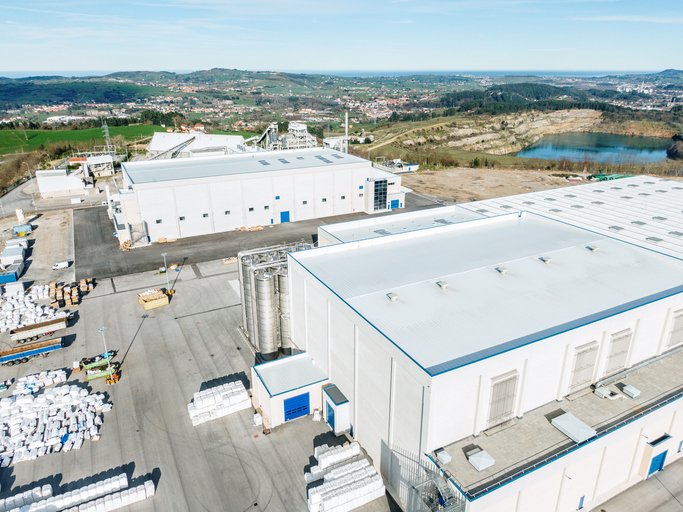
What Roof is Best for You?
Choosing the right material for your property’s roof is a big decision that impacts your property’s aesthetics, energy efficiency, and long-term value. With the many roofing materials available, it’s important to understand which material aligns with your specific needs. In this article, we’ll explore the different types of roofing materials, important considerations when choosing roofing materials, and essential tips for installation and maintenance.
Types of Roofing Materials
When selecting a roof, the material you choose is crucial. The following are some of the most common types of roofing materials available, each with its own unique benefits and drawbacks.
Asphalt Shingles
Asphalt shingles have remained popular due to their affordability and how easy they are to install. They come in various styles and colors, offering homeowners flexibility in design. Asphalt shingles are relatively durable, lasting between 15 to 30 years, depending on their quality and local weather conditions. However, they are not as environmentally friendly as other options, as they are made from petroleum-based products and need to be replaced more often than other roofing materials.
Metal Roofing
Metal roofs have increased in popularity due to their durability, energy efficiency, and modern aesthetic appeal. Available in various materials like aluminum, steel, and copper, roofs made of metal can last 40 to 70 years with proper maintenance. Metal roofs are greatly resistant to extreme weather conditions, including high winds, hail, and heavy snow, making it an excellent choice for areas prone to severe weather. Additionally, metal roofs are reflective, helping to reduce cooling costs in hot climates. However, metal roofs can have higher initial costs than other materials, and the noise during rainstorms may be a concern for some homeowners.
Concrete and Clay Tiles
These unique tiles are known for their distinctive appearance and long-lasting durability. These tiles are especially popular in Mediterranean, Spanish, and Southwestern-style homes. Clay tiles are formed from natural materials and can last over 50 years, while concrete tiles offer a similar lifespan at a lower cost. These types of tiles are resistant to rot, insects, and fire, and require little maintenance. However, they are heavy, requiring a reinforced roof structure, and their high cost can be a deterrent for some property owners.
Slate Roofing
Slate roofing is a premium option known for its timeless beauty and exceptional durability. Made from natural stone, slate roofs can last 75 to 100 years or more, making them a long-term investment. Slate is extremely resistant to pests, mold, and fire, and it requires minimal maintenance. However, like clay tiles, slate is heavy and requires a sturdy roof structure. The high cost of materials and installation makes slate roofing more expensive than most other options available.
Wood Shingles and Shakes
Wood shingles and shakes offer a natural, rustic appearance that is particularly appealing for certain architectural styles. Cedar is the most common wood used for roofing due to its resistance to insects and decay. Wood shingles are machine-cut for a uniform appearance, while shakes are hand-split for a more textured, rugged look. Wood roofing typically lasts 20 to 40 years, depending on the climate and maintenance. However, wood roofs are more susceptible to fire, rot, and mold, making them less suitable for areas with high humidity or wildfire risk.
Synthetic Roofing Materials
Synthetic roofing materials like plastic, rubber, and polymer-based products, are made to mirror the appearance of natural elements such as wood, tile, and slate. These materials are durable, lightweight, and usually more affordable than natural materials. Synthetic roofs are also resistant to extreme weather conditions and require minimal maintenance. However, the longevity of synthetic materials can vary, and they may not have the same aesthetic appeal as natural materials.
Factors to Consider When Choosing a Roof
Choosing the right roofing material for your property involves more than just choosing your favorite style. Several factors should be considered to ensure that your roof meets your needs and performs well over time.
Climate and Weather Conditions
Your local climate plays a big role in determining the best roofing material. For example, metal roofing is useful in areas with heavy snowfall due to its resilience and ability to shed snow easily. In contrast, clay and concrete tiles are well-suited for hot climates because they provide excellent insulation and resist heat absorption. Consider the weather patterns in your region when selecting a roofing material to ensure it can withstand local conditions.
Budget and Cost
Your budget is another important factor when choosing a roof. While it’s tempting to go for the most durable or aesthetically pleasing option, it’s essential to balance cost with your long-term goals. Asphalt shingles are usually the cheapest option, while slate and metal roofing are more expensive but offer superior longevity. Additionally, consider the cost of roof installation and potential future roof repair needs, as some materials may require specialized labor.
Durability and Maintenance
Durability and maintenance requirements vary widely among roofing materials. While metal roofing and slate offer long lifespans with minimal maintenance, wood shingles, and shakes require routine treatment and maintenance to prevent rot and insect damage. Consider the amount of time and money you want to invest in maintaining your roof when choosing a material.
Energy Efficiency
As the world becomes more eco-conscious, property owners are becoming increasingly interested in energy efficiency. Certain roofing materials, such as clay tiles and metal, are more energy-efficient due to their reflective properties, which help keep your home cooler in the summer. Synthetic roofing materials can also offer energy efficiency, depending on their design and installation. Energy-efficient roofs can reduce your utility bills and may qualify you for tax credits or rebates.
Installation and Maintenance Tips
Once you’ve chosen the right roofing material, it’s important to make sure your roof is installed and maintained properly.
Choosing a Professional Roofer
Selecting a qualified and experienced roofer is crucial for a successful roof installation. Look for a licensed contractor with a solid reputation and experience installing the type of roofing material you’ve chosen. A roofing professional will make sure that your roof is installed properly, lowering the risk of future roof repair or replacement needs. Be sure to ask for references, read reviews, and verify the roofer’s credentials before making a decision.
Regular Maintenance
The key to prolonging the lifespan of your roof lies in regular maintenance. Conduct annual roof inspections to identify any signs of damage and address them swiftly. Prompt roof repair can prevent minor issues from becoming significant problems that require costly roof replacement. Additionally, keep your roof clean by removing debris, which can retain moisture and result in mold growth.
Find the Perfect Roof for Your Home with Commercial Roofing Rana
Selecting the best roof for your property is a crucial decision that impacts your property’s protection, aesthetics, and long-term value. With nearly four decades of experience in Memphis and Nashville, TN, and more, Commercial Roofing Rana is here to guide you through the process, offering expert advice on materials, installation, and maintenance tailored to your specific needs. As a trusted, family-owned business, we pride ourselves on delivering quality craftsmanship and personalized service that ensures your roof not only meets but exceeds your expectations. Contact us today and let us help you make the right choice for your property’s roofing needs.
